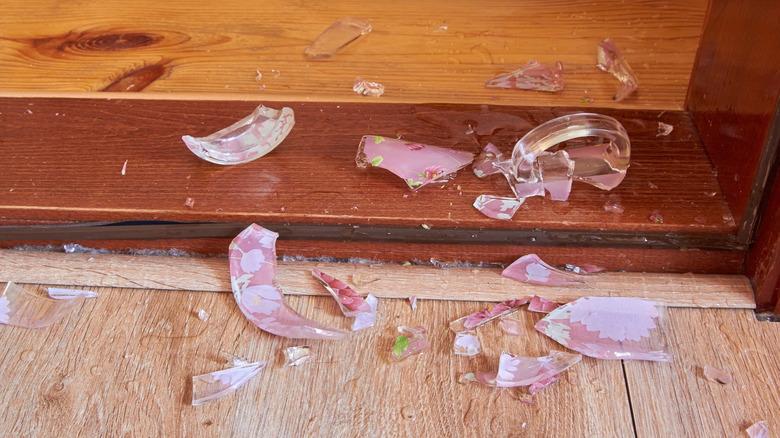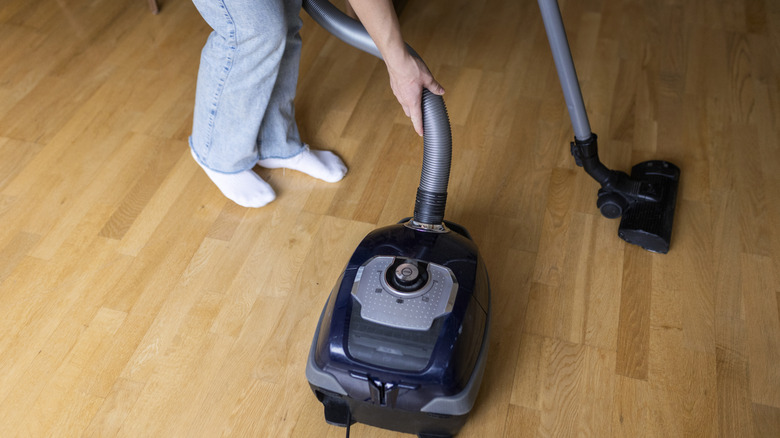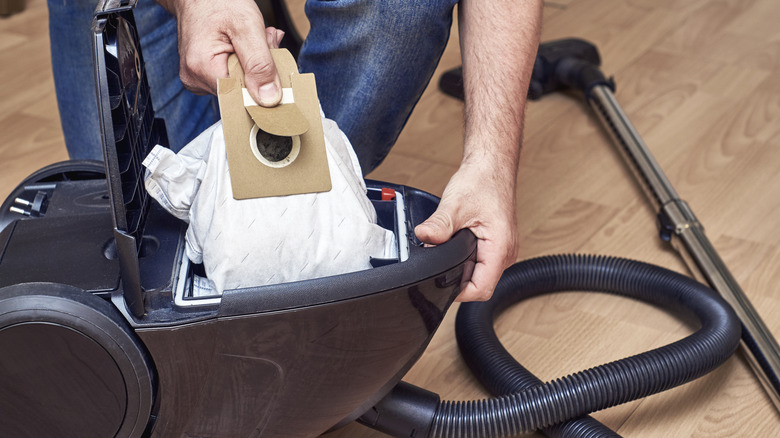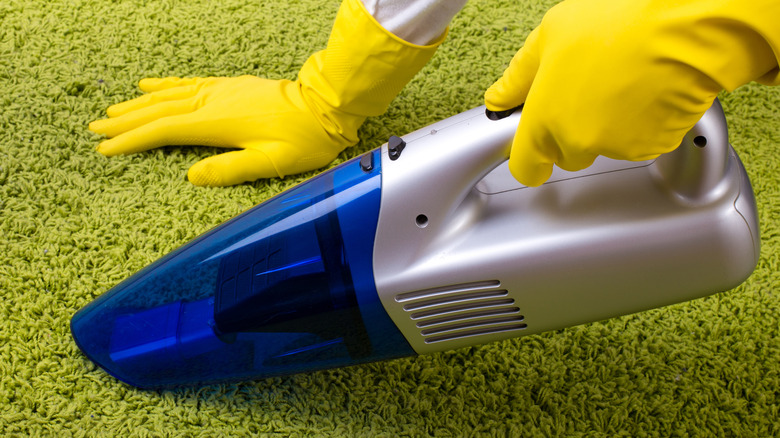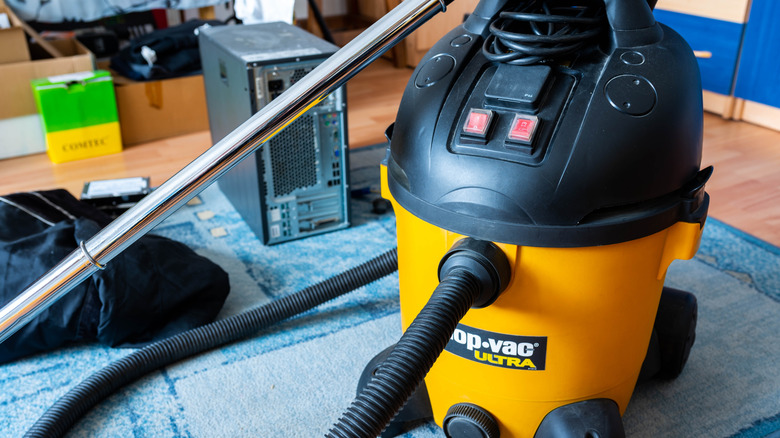The Vacuum Types You Should Never Use On Broken Glass
Cleaning up broken glass can present unique challenges that a standard vacuum just is not equipped to handle. While the instinct to vacuum up small shards might seem practical, using the wrong type can ruin your vacuum. The sharp edges of glass, even in small bits, can easily slice through your vacuum's components, clog its filters, or become completely lodged in important mechanisms that create a long-term problem. Even the most popular vacuums might have trouble handling dangerous shards of glass. Additionally, certain vacuum designs may inadvertently blow tiny fragments into the air, increasing the risk of inhalation or skin contact.
Knowing all these risks is important before attempting to clean up broken glass. The average household vacuum, designed for dust and debris, lacks the durability and filtration to handle sharp fragments safely. Even high-end models can suffer irreparable harm if improperly used on glass. There are some vacuums that are up to the task and provide a safe and effective way to clean up a broken, dangerous mess. Choosing the right tool for the job is the best way to save yourself some money on future repairs or replacements.
Why flexible hoses and glass don't mix
One poor choice, which may not be immediately obvious for cleaning up broken glass, is a vacuum with a flexible hose attachment. These hoses, typically made of rubber or plastic, can be easily damaged by sharp glass. As the shards travel through the hose, they can slice the inner lining, creating cuts that weaken the structure and reduce suction. In some cases, glass might even become embedded in the hose walls, posing a lingering hazard for future use.
Hose systems may also scatter tiny glass particles rather than contain them. The suction force can cause smaller shards to ricochet inside the hose, potentially escaping through seams or connection ports. This not only fails to fully clean the area but also increases the risk of small particles becoming airborne. Some models also have hose attachments that feature narrow crevices that can clog when larger pieces of glass are picked up, leading to blockages that require disassembly to clear. For all these reasons, vacuums relying on flexible hoses should never be your first choice when dealing with broken glass.
How glass can destroy standard vacuum bags
Traditional bag vacuums might be the worst choice of all. The paper or fabric construction of most vacuum bags offer little protection against sharp glass edges. These pieces can puncture the material, rendering it completely useless. Once ripped, the holes will allow fine glass particles and dust to escape back into the air or even damage the vacuum's internal components. Even if the bag held on through cleaning without tearing, removing and disposing of it could be dangerous, as shards can tear through the bag during handling.
Bagged systems also struggle with glass fragments due to their filtration system. Smaller particles often bypass the bag entirely, traveling through the vacuum's exhaust system where they can damage sensitive components or even blow the debris back onto your floor. These vacuums are not designed to capture fine glass powder effectively. While some heavy-duty bags claim reinforced construction, they still cannot match the safety of alternatives when dealing with broken glass.
Hose-free handheld vacuums are a safe alternative
For small glass spills, a sturdy hose-free handheld vacuum can often provide the safest solution. These small units eliminate the risks associated with hoses by utilizing direct suction that will minimize the path glass fragments need to travel. Many quality handheld models use durable plastic or metal debris chambers that can resist tearing, along with a washable filter that can be cleaned easily after use. The sealed design also prevents particles from escaping, making sure the mess is contained. Even the cheapest cordless handheld vacuum should be able to manage a small glass spill.
The best handhelds for cleaning up glass should feature a wide mouth that will minimize the possibility of clogging while being able to handle larger fragments. Some models even have transparent collection holds that will allow you to monitor the cleanup process without having to open the unit. After use, empty carefully into a sturdy container, preferably while wearing gloves. A handheld vacuum may not be suitable for big messes, but it works well for the occasional small breakage. It can also get into hard-to-reach spaces that are more difficult to get at with a broom alone.
Why shop vacs are best for glass cleanup
When dealing with any amount of glass, a wet/dry shop vacuum is absolutely the best choice. These heavy-duty machines feature strong construction and thick-walled collection tanks that can withstand sharp glass edges. Unlike normal vacuums, shop vacs can include specialized filters designed to trap tiny particles, preventing glass dust from circulating back into the air. Many models also offer optional dust bags to provide an extra layer of protection when emptying.
The wide hose opening of a shop vacuum allows for quick and easy cleanup without the risk of clogging. Metal-reinforced hoses offer greater durability, but do not come standard on all models. To make the entire process even safer, lightly moisten the broken glass area with a spray bottle to help reduce airborne particles from blowing around. This takes advantage of the shop vac's wet pickup capabilities and makes things just a little safer during cleanup. The design of a shop vac will help with disposal. Simply detach the collection tank while wearing gloves and transfer the contents into a puncture-resistant bag. Even though it may be overkill for small spills, you cannot go wrong with the safety of a shop vac as one of the best methods for cleaning up glass.
